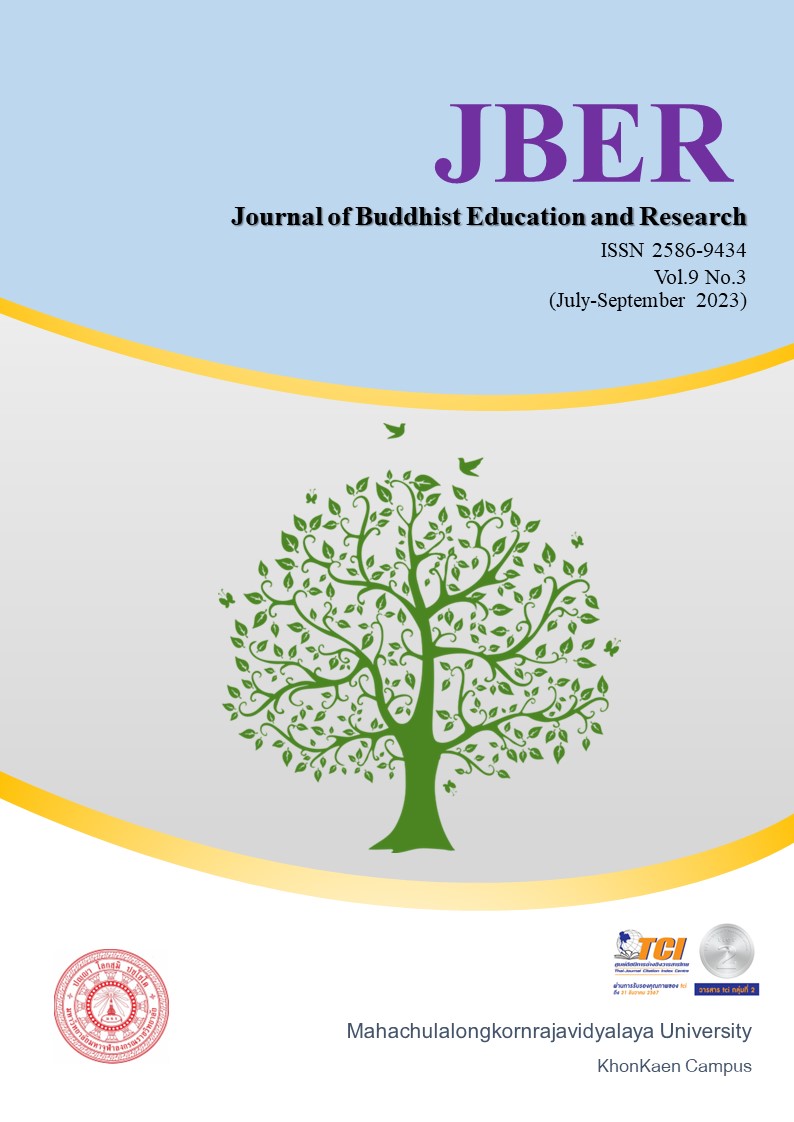STOCK SELECTIVITY ABILITY AND MARKET TIMING PERFORMANCE OF SET 50 INDEX FUND
Keywords:
Set 50 Index Fund, Stock selectivity, Market timingAbstract
The objection of this independent study is of stock selectivity ability and market timing performance of set 50 Index fund of 10 set index funds in thailand ,using Treynor and Mazuy (1966) and Henrikeeon and Merton (1981) model. The secondary data on daily net asset value of the mutual fund,one-year Treasury bills and government bound,and the Stock Exchange of Thailand from 1 January 2017 to 31 December 2021.
The results in stock selectivity ability and market timing performance of set 50 Index fund .There were 5 funds having stock selectivity ability and 4 Funds having market timing performance,based by The Treynor and Mazuy (1966) model, Henriksson & Merton (1981) model found that there were 4 funds having positive selectivity ability and 2 funds having positive market-timing.
References
บงกชรัตน์ ดวงฉวี. (2560). การศึกษาความสามารถในการพยากรณ์ทิศทางตลาดและการคัดเลือกหลักทรัพย์ของกองทุนรวมในประเทศไทย กรณีศึกษากองทุนรวมตราสารทุน. (วิทยานิพนธ์วิทยาศาสตรมหาบัณฑิต (การบริหารการเงิน), มหาวิทยาลัยธรรมศาสตร์).
ฤทธิ์ชาติ นิมมานเหมินท์, กฤษณะ กันทาปัน, ศรัณย์ ภูดล และ ธีราลักษณ์ สัจจะวาที. (2561). ผลการดำเนินงานด้านการจับจังหวะเวลาการลงทุนของกองทุนรวมเพื่อการเลี้ยงชีพในประเทศไทย โดยใช้แบบจำลองของ Treynor and Mazuy และแบบจำลองของ Henriksson and Merton. วารสาร ธุรกิจปริทัศน์, 10(2), 55-74
ธีราลักษณ์ สัจจะวาที. (2557). ผลการดำเนินงานจากการจีบจังหวะเวลาการลงทุน. วารสารสุทธิปริทัศน์, 28(5), 22-44.
ฉวีวรรณ ทิพย์วัน. (2560). การวัดความสามารถด้านจังหวะการลงทุนและการเลือกสรรหลักทรัพย์ของผู้จัดการกองทุน : กรณีการลงทุนในกองทุนรวมหุ้นขนาดใหญ่. (การค้นคว้าอิสระวิทยาศาสตรมหาบัณฑิต สาขาวิชาการเงิน, มหาวิทยาลัยกรุงเทพ).
ศิริประภา แสนทอง, ศศิพันธ์ นิตยะประภา, และธนโชติ บุญวรโชติ. (2563). ความสามารถในการจับจังหวะเวลาของกองทุนรวม LTF ใน การประชุมนำเสนอผลงานวิจัยระดับบัณฑิตศึกษา ครั้ง 15 ปีการศึกษา 2563 วันที่ 13 สิงหาคม 2563, มหาวิทยาลัยรังสิต.
สุพรรษา ลอรี่ และธีราลักษณ์ สัจจะวาที. (2563). การเปรียบเทียบผลการดำเนินงานด้านการเลือกหลักทรัพย์และด้านการจับจังหวะเวลาการลงทุนระหว่างกองทุนรวมเพื่อการเลี้ยงชีพ (RMF) กับกองทุนรวมหุ้นระยะยาว(LTF) ในประเทศไทย. วารสารสุทธิปริทัศน์, 34(110), 38-50.
ฤดี เงินเชื้อ. (2560). การศึกษาความสามารถในการเลือกจังหวะเวลาในการลงทุนและการเลือกหลักทรัพย์ ในตลาดของกองทุนรวมในประเทศสิงคโปร์: กองทุนรวมที่มีการจัดอันดับ 5 Most Popular Funds in April 2016 (Morning Star). (การค้นคว้าอิสระวิทยาศาสตรมหาบัณฑิต สาขาวิชาการเงิน, มหาวิทยาลัยกรุงเทพ).
Treynor, J., Mazuy, K. (1966). Can mutual funds outguess the market? Harvard. Business Review, 44, 131-136.
Vikas Choudhary and Preeti Sehgal Chawla. (2012). Selectivity And Market Timing Ability Of Fund Managers In India: An Analysis Of Selected Equity Mutual Funds. 7th International Business Research Conference. Indian Education Society's Management College and Research Centre, 75-83.
Raktim Ghosh (2019). Stock Selectivity and Market Timing Skills of Indian Mutual Fund Managers – A Study on Multi Cap Funds. Business Studies. 40(2), 82-99.
Abubakar Musaha, Damankah Basil Senyoa and Eliasu Nuhub (2014). Market timing and selectivity performance of mutual funds in Ghana. Management Science Letters, 4, 1361–1368.
Anandi P. Sahu, Robert T. Kleiman, And Joseph Callaghan. (1998). The Timing and Stock Selection Abilities of Bank Funds: Evidence Based on Meta-Analysis. Journal of Financial Services Research, 13(2), 137-152.
Mohamed Shano Dawe. (2016). The Market Timing Skills of Fund Managers in Less Developing Economies (A Case of Equity and Blended Funds in Kenya). World scientific news, 45(2), 111-125.





